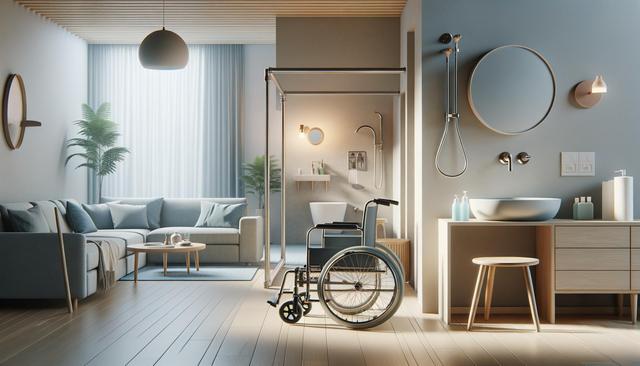Understanding Your Mobility Needs
Mobility challenges can arise from a variety of conditions, such as aging, injury, surgery, or chronic illnesses. Recognizing the specific type of difficulty you’re experiencing is the first step in finding appropriate solutions. Common issues include balance concerns, muscle weakness, joint pain, and fatigue, all of which can impact how safely and comfortably you move through your daily environment.
To better understand your mobility needs, consider scheduling an assessment with a healthcare professional such as a physical therapist or occupational therapist. They can identify areas of concern and recommend specific tools or strategies. Self-assessment can also be helpful — take note of tasks that have become more difficult, like climbing stairs, standing for extended periods, or walking on uneven surfaces.
Once your needs are clear, it’s easier to put together a plan that includes both physical aids and adaptations in your environment. This can range from choosing the right walking tool to modifying your living space for comfort and safety.
Finding Support with Walking Tools
Walking tools are a key resource for many people facing mobility challenges. These devices not only provide physical support but also enhance confidence and reduce the risk of falls. The right tool depends on your balance, strength, and walking ability. Options include:
- Canes – provide light support and are easy to use in smaller spaces.
- Walkers – offer more stability and are suitable for those who need more weight-bearing support.
- Rollators – equipped with wheels and a seat, helpful for those who need frequent rests while walking.
- Crutches – often used for temporary mobility support during recovery.
It’s important to select a walking tool that fits your height and is comfortable to use. A healthcare provider can ensure the device is adjusted correctly and that you’re trained in its use. In addition to offering balance assistance, many of these tools are designed with features that support daily activities, such as built-in storage or the ability to fold for easy transport.
Seeking support doesn’t end with the tool itself. Support groups, both online and in-person, can offer advice and emotional encouragement to individuals adjusting to new mobility needs.
Adapting Your Living Environment
Making small changes to your home can greatly enhance safety and ease of movement. Start by identifying areas that pose a risk of tripping or falling, such as cluttered hallways, slippery floors, or uneven rugs. Addressing these hazards can help maintain independence in daily tasks.
Here are some common home adaptations that support improved mobility:
- Installing grab bars in bathrooms and near stairs
- Using non-slip mats in the shower and kitchen
- Rearranging furniture to create wider walking paths
- Adding ramps for entryways with steps
- Improving lighting in all rooms and hallways
In kitchens and bedrooms, consider placing frequently used items within easy reach to minimize the need for bending or stretching. For multi-level homes, a stairlift or making one floor fully accessible can provide a long-term solution.
These adjustments not only reduce the risk of injury but also support a more comfortable and confident lifestyle within your own space.
Maintaining a Routine with Mobility Challenges
Living with mobility limitations doesn’t mean giving up an active or fulfilling lifestyle. Establishing a consistent daily routine can help maintain physical and mental well-being. This includes incorporating manageable physical activity, engaging in hobbies, and ensuring adequate rest.
Low-impact exercises such as chair yoga, stretching, or short walks with support tools can help improve flexibility and circulation. Consult with a healthcare provider to design a routine that matches your ability and goals. Staying active within your limits is crucial for preventing further mobility decline.
Additionally, plan your day to include:
- Regular mealtimes for balanced nutrition
- Scheduled breaks to avoid fatigue
- Social interactions to reduce feelings of isolation
- Simple tasks that contribute to a sense of accomplishment
Using tools like personal planners or reminder apps can help keep your routine organized. Maintaining structure is beneficial not just for physical health, but also for emotional stability and overall life satisfaction.
Emotional Well-being and Support Systems
Adjusting to mobility limitations can affect more than just physical ability — it often has an emotional impact, too. Feelings of frustration, dependence, or isolation are common. Acknowledging these emotions is an important part of adapting to new circumstances.
Support systems play a vital role in emotional well-being. Consider reaching out to:
- Friends and family who can provide encouragement and assistance
- Support groups for individuals with similar experiences
- Counselors or therapists trained in chronic condition management
Maintaining social connections helps reduce stress and improves overall outlook. Whether through phone calls, community programs, or online forums, staying in touch with others creates a sense of belonging and purpose.
It’s also valuable to celebrate small victories. Each successful adaptation or completed task is a step toward greater independence. A positive mindset, combined with practical strategies, can make a meaningful difference in daily life.
Conclusion: Building Confidence Through Adaptation
Living with mobility challenges requires thoughtful adjustments, but it doesn’t mean sacrificing independence or quality of life. By understanding your specific needs, finding support with walking tools, adapting your home, maintaining a routine, and nurturing emotional well-being, you can create a lifestyle that balances safety with autonomy. These strategies empower individuals to remain active participants in their daily lives, fostering both confidence and resilience over time.




Leave a Reply